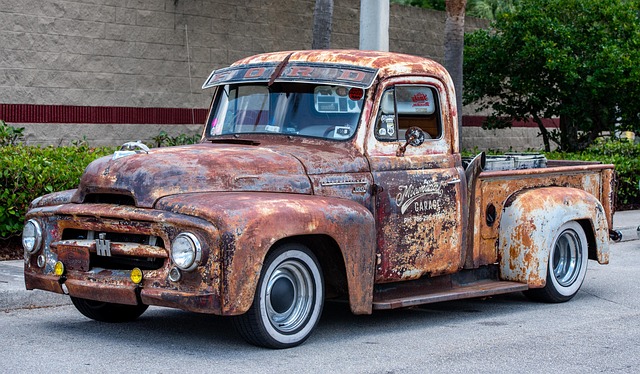Looking to register your car in California? This comprehensive guide walks you through the process, ensuring a smooth experience. From understanding crucial registration requirements to gathering essential documents and utilizing a VIN verifier for vehicle authenticity, each step is detailed for both online and in-person applications. Discover how to pay California’s vehicle registration fees and obtain your license plate with ease.
- Understand California Car Registration Requirements
- Gather Necessary Documents for Vehicle Registration
- Use VIN Verifier to Ensure Vehicle Authenticity
- Submit Application for Vehicle Registration Online or In-Person
- Pay California Vehicle Registration Fees and Obtain License Plate
Understand California Car Registration Requirements

Before registering your car in California, it’s crucial to understand the state’s specific requirements. All vehicles operating on California roads must be properly registered and have a current vehicle registration certificate, also known as a “registration card.” One key aspect is ensuring your vehicle meets emissions standards; failing an inspection may delay registration. Additionally, all cars in California are required to have their Vehicle Identification Number (VIN) verified as part of the registration process. This verification ensures that the vehicle matches the information on record and helps prevent fraud.
California’s Department of Motor Vehicles (DMV) offers several ways to complete this VIN inspection, including a traditional in-person visit or convenient mobile vin verification services. If you opt for a mobile vin verifier, a professional will come to your location to perform the check, making the process even more accessible. Whether conducting a vin inspection at a DMV office or using a mobile service, having your vehicle’s VIN verified is a critical step before submitting your registration application.
Gather Necessary Documents for Vehicle Registration

Before registering your car in California, make sure you have all the essential documents ready. The key piece is the Vehicle Identification Number (VIN) verification report, which can be obtained through a mobile VIN verifier or by conducting a VIN inspection. This report confirms the vehicle’s history and ensures it meets safety standards.
Gathering these documents is crucial for a smooth registration process. Additionally, you’ll need proof of insurance, a valid driver’s license, and the vehicle’s title (if applicable). With these in hand, you’re well-prepared to take the next steps in registering your car with California’s Department of Motor Vehicles (DMV).
Use VIN Verifier to Ensure Vehicle Authenticity

Before proceeding with the registration process, it’s crucial to verify your vehicle’s authenticity using a trusted method like a VIN verifier. This step is essential for ensuring that the car you’re looking to register is genuine and hasn’t been reported as stolen or had its identity altered. A simple online tool can perform a comprehensive VIN inspection, checking against vast databases to confirm the vehicle’s history.
Opting for a mobile VIN verification service can make this process even more convenient. These services allow you to input your car’s unique Vehicle Identification Number (VIN) via an app or website, providing instant access to detailed information about the vehicle’s past and current status. This is particularly beneficial when purchasing a used car, as it offers peace of mind and helps prevent potential scams.
Submit Application for Vehicle Registration Online or In-Person

You have the option to register your car either online or in-person when applying for vehicle registration in California. If you choose the digital route, a key step is to use a reliable VIN verifier, like those offered by mobile services, which can ensure the accuracy of your vehicle’s identification number (VIN). These services provide a convenient and efficient way to verify ownership and specifications before submitting your application.
For an in-person visit, you’ll need to go to a California Department of Motor Vehicles (DMV) field office with original documents, including proof of ownership, registration fees, and your vehicle’s title if applicable. A mobile VIN inspection or verification service can still be beneficial here, as it can streamline the process by confirming your vehicle’s details before you arrive at the DMV, potentially saving you time and effort.
Pay California Vehicle Registration Fees and Obtain License Plate

After completing your California vehicle registration application, the next step is to pay the required fees. These fees cover various costs associated with registering your vehicle, including administrative charges and emissions testing. You can typically pay these fees online through the DMV’s website or in person at a local California DMV office. Once your payment is processed, you’ll be issued a Certificate of Registration, which grants you legal permission to operate your vehicle on California roads.
Following this process, it’s time to obtain your license plates. In California, these plates are assigned based on the information provided in your registration application, including your vehicle’s make, model, and year. To ensure everything is accurate, double-check your details before submission. Once confirmed, a set of custom license plates will be produced and linked to your vehicle’s unique VIN (Vehicle Identification Number). Even if you opted for a mobile VIN verifier or conducted a vin inspection during your registration process, remember that these tools facilitate the verification but don’t replace the official California registration and plate issuance procedure.
Registering a car in California is a straightforward process that requires understanding specific requirements and gathering essential documents. By using a VIN verifier to ensure vehicle authenticity, you can streamline the application process either online or in-person. Once approved, pay the corresponding fees and obtain your license plate, ensuring your vehicle is legally registered and ready for California’s roads.
